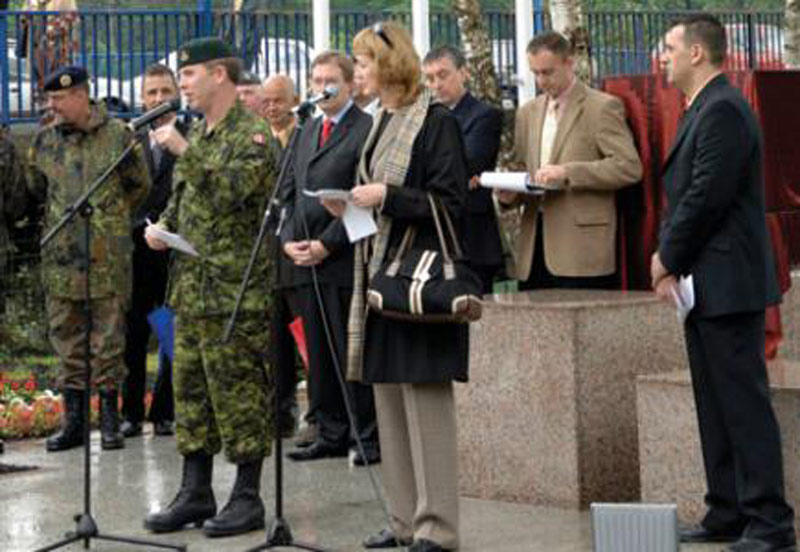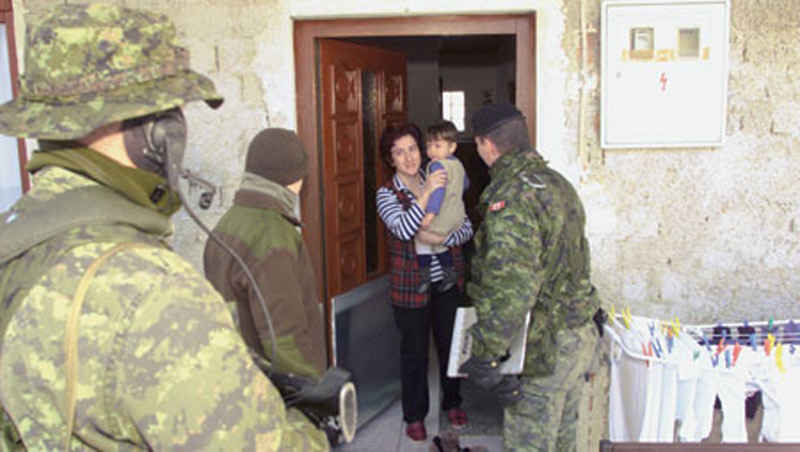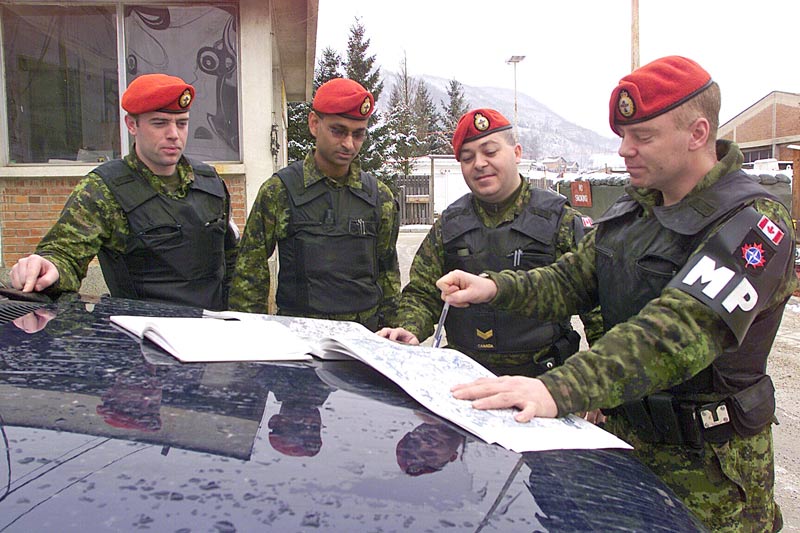
“The men and women of the Canadian Forces have left a very positive impression of Canada upon the people of Bihac,” said Mayor Hamdija Lipovača. “It is fitting then that this park dedication serves as a lasting memory of Canada’s devotion to helping the people of Bihac return to a peaceful way of life,” he added.

Rules of engagement often made them helpless to intervene.
From 1992 to 2010, more than 40,000 Canadian military personnel served in the Balkans; 23 died there.
War raged in Bosnia-Herzegovina for more than three years, during which half its population had fled and more than 100,000 were killed.
The Canadians’ job during the conflict was to protect civilians and stabilize the situation, which meant disrupting the supply of arms fuelling the conflict and providing humanitarian aid. Rules of engagement often made them helpless to intervene; civilians became victims of ethnic cleansing.
After a peace deal was struck in 1995, peacekeepers helped reconstruct devastated communities.
They helped control the supply of weapons that fed the violence, monitored elections and helped remove landmines from the countryside. They helped build rural electrical systems, rebuild schools, repair wells and septic systems, reconstruct bridges and roads.

In 2003, the situation had stabilized enough for NATO to reduce the number of troops in the area from 12,000 to 7,000, including about 650 Canadians. When the European Union Force took over operations the next year, fewer than 85 Canadians continued serving there, providing liaison and observation services during the transition.
The European Union established 44 liaison and observation centres across the country. The Canadians were responsible for an area around Bihac that was home to about 275,000 people in 35 communities.
They conducted presence patrols, “the equivalent to taking a Sunday drive and seeing who you bump into and chat with them,” commanding officer Major Joseph Zunic said in a 2007 article in FrontLine magazine.

“Our reputation,” he said, “was built upon tiny little successes.”
Although Canadian teams changed every six months, local citizens found Canadian values were constant, particularly those of tolerance.
The Canadians in the last tour to Bihac were welcomed with open arms, Zunic remembered, “beneficiaries of all of the thank yous [for] all of the work that had come before us.
“Previous rotations had helped rebuild a fire station in Kulen Vakuf, collected illegal weapons for destruction, co-ordinated meetings of individuals from the three ethnic groups, and donated school supplies from schools in Canada to schools here.”
The memorial honours them all.
Advertisement












